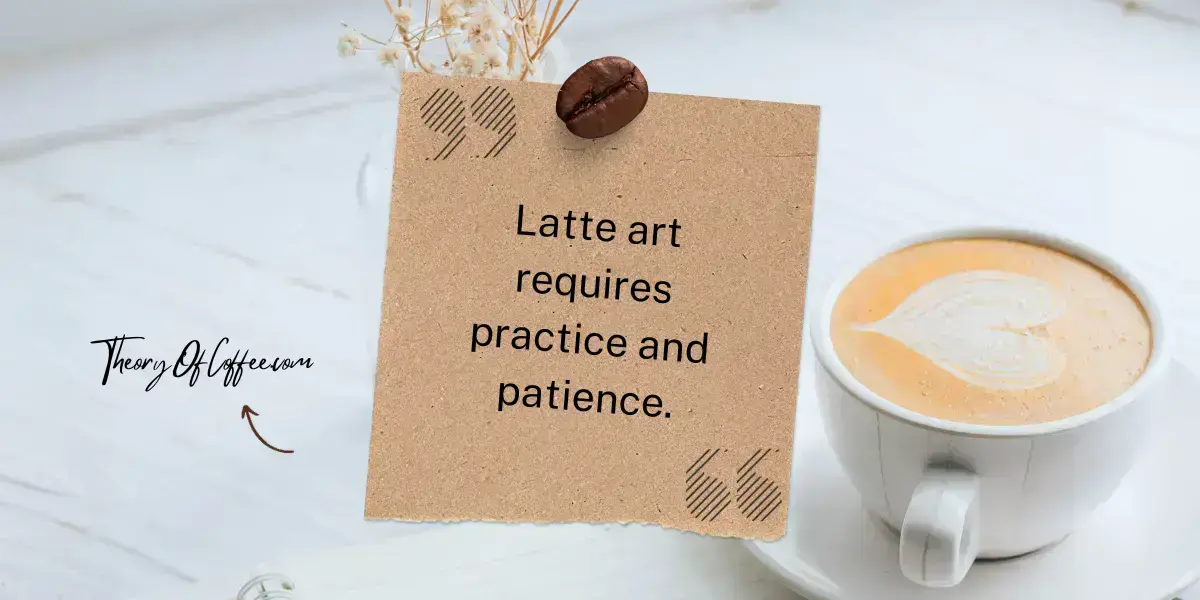The Cappuccino Guide: Origin to Brew
Cappuccino is more than just a coffee-based drink for many; it's a daily ritual, a work of art, and a culinary delight. This blog post will dive into everything you need about this beloved beverage. We will explore the origins of cappuccino, its key components, the secrets to brewing the perfect cup at home, and the various ways it is enjoyed worldwide. So grab your favorite mug and journey through the cappuccino world.
1. The Origin and History of Cappuccino

The word "cappuccino" is derived from the Italian term "cappuccini," which refers to the Capuchin friars of the Capuchin order. These friars were known for their distinctive brown robes, which resembled the color of the coffee when mixed with milk. The association between the coffee's color and the friars' robes led to the name "cappuccino" for the beverage.
The modern cappuccino as we know it today began to take shape in Italy in the early 20th century with the introduction of the espresso machine. This revolutionary machine allowed for the quick and efficient extraction of coffee, which paved the way for creating a variety of espresso-based drinks, including the cappuccino.
2. What is a Cappuccino?

A cappuccino is a balanced blend of equal parts espresso, steamed milk, and milk foam. The quality of these components and how they're combined determines the deliciousness of the final product. Let's take a closer look at each element that makes up this iconic coffee beverage:
- Espresso: A cappuccino's foundation is an espresso shot. This concentrated coffee is brewed by forcing hot water through finely-ground coffee beans under high pressure. The result is a rich and bold base that provides the distinctive flavor of a cappuccino.
- Steamed Milk: The next component is steamed milk, which adds creaminess and sweetness to the cappuccino. The milk is heated with a steam wand, creating a velvety texture and enhancing the overall flavor profile of the drink.
- Milk Foam: The final touch is the milk foam, which sits atop the cappuccino, creating a layer of light, airy bubbles. This foam not only adds visual appeal but also adds a creamy and frothy texture to the cappuccino.
The art of creating a perfect cappuccino lies in achieving the right balance between these three components. The espresso should be solid and flavorful, the steamed milk should be silky and smooth, and the milk foam should be light and airy.
3. Popularity and Consumption of Cappuccino

Cappuccino, originally an Italian breakfast drink, has gained popularity worldwide. However, its consumption varies across regions. While Italians prefer a miniature, concentrated version in the morning, North Americans savor it in larger sizes throughout the day.
In Italy, cappuccino is traditionally consumed in the morning as part of breakfast. It is a morning pick-me-up, often enjoyed alongside a pastry or biscotti. Italians believe combining the caffeine from the espresso and the frothy milk in the cappuccino provides a balanced start to the day.
In North America, cappuccino has become a staple in coffee shops and is enjoyed throughout the day. It is often served in larger sizes and can be customized with various flavors and toppings. Many coffee enthusiasts appreciate a well-made cappuccino's rich flavor and artistry.
The popularity of cappuccino has soared in recent years, thanks to the rise of coffee culture and the increasing interest in specialty coffee. With its smooth espresso base, velvety steamed milk, and delicate foam, cappuccino has become a beloved beverage for coffee connoisseurs worldwide.
4. Brewing the Perfect Cappuccino at Home

Brewing a perfect cappuccino at home involves mastering several elements – choosing the right beans and machine to achieve the perfect milk froth. Let's walk through the steps to help you become your barista:
- Selecting the Coffee Beans: Start by choosing high-quality coffee beans that suit your taste preferences. Opt for a medium roast for a balanced flavor profile that complements the milk in a cappuccino.
- Grinding the Beans: Grind the coffee beans before brewing to preserve the freshness and flavors. Use a burr grinder for a consistent grind size suitable for espresso extraction.
- Prepping the Espresso Machine: If you have an espresso machine, ensure it is clean and properly maintained. Follow the manufacturer's instructions for preheating and priming the machine.
- Tamping the Coffee: Fill the portafilter with freshly ground coffee and tamp it evenly for a compact puck. This ensures a consistent extraction and optimal flavor.
- Extracting the Espresso: Insert the portafilter into the espresso machine and start the extraction process. The ideal extraction time should be around 25-30 seconds, resulting in a rich and flavorful shot of espresso.
- Frothing the Milk: While the espresso is extracted, prepare the milk for steaming. Use a stainless steel pitcher and fill it with cold, fresh milk. Position the steam wand just below the surface of the milk and turn on the steam. Swirl the pitcher to create a whirlpool effect and achieve a velvety texture.
- Assembling the Cappuccino: It's time to combine once the espresso shot is ready and the milk is frothed. Pour the steamed milk over the espresso, holding back the foam with a spoon. Finish by spooning the foam on the cappuccino, creating a beautiful layered effect.
- Add Your Personal Touch: If desired, sprinkle some cinnamon or cocoa powder on the foam for flavor and decoration.
By following these steps and experimenting with different coffee beans, grind sizes, and milk-frothing techniques, you can master the art of brewing a perfect cappuccino at home.
5. The Art of Cappuccino: Latte Art Basics

Latte art, a method of pouring steamed milk into espresso that creates a design on the surface, has become a signature of modern cappuccinos. It adds aesthetic value and shows the skill of the barista. While latte art is often associated with lattes, it can also be applied to cappuccinos. Let's explore some simple latte art designs you can try at home:
- Heart: To create a heart design, gently pour the steamed milk into the center of the espresso, allowing it to sink to the bottom. Then, raise the pitcher slightly and slowly pour a thin stream of milk back through the center of the initial pour. This will create a heart shape on the surface of the cappuccino.
- Rosetta: The rosetta design is achieved by pouring the milk back and forth while slowly moving the pitcher from one side of the cup to the other. This creates a series of parallel lines resembling a flower's petals. Finish by dragging a toothpick or skewer through the lines to create leaf-like patterns.
- Tulip: The tulip design starts with a similar pouring motion as the rosetta but with a slight twist. After pouring the initial lines, gently shake the pitcher back and forth while continuing to pour. This will create the appearance of petals opening up, resembling a tulip flower.
Remember, latte art requires practice and patience. Start with the basic designs and gradually advance to more intricate patterns as you develop your skills. You can create stunning latte art on your cappuccinos with time and dedication.
6. Cappuccino Variations Around the World

Cappuccino has been adapted around the world to suit regional tastes and climates. From the cold cappuccino freddo enjoyed in Greece to the iced versions popular in Canada, the versatility of cappuccino is truly impressive. Let's explore some of the unique variations you can find globally:
- Cappuccino Freddo: Originating from Greece, cappuccino freddo is a refreshing iced version of the traditional cappuccino. It combines cold espresso with frothed milk and is served over ice. This chilled delight is perfect for hot summer days.
- Iced Cappuccino: Popular in North America, especially in Canada, the iced cappuccino offers an excellent and creamy twist to the classic hot beverage. It typically consists of espresso, cold milk, and ice, topped with a generous dollop of milk foam.
- Cappuccino Viennese: In Vienna, Austria, cappuccino takes a unique form. Known as "Wiener Melange," this variation includes equal parts espresso, steamed milk, and foam. It is often served with cocoa powder or cinnamon dusting on top.
- Dry Cappuccino: Unlike the traditional cappuccino, a dry cappuccino has less steamed milk and more foam. This creates a more robust coffee flavor and a drier texture. It's famous for those who prefer a more intense espresso experience.
These are just a few examples of the many variations of cappuccino enjoyed worldwide. Each variation offers a unique twist on the classic cappuccino, showcasing the creativity and adaptability of coffee culture.
7. Similar Drinks to Cappuccino

While cappuccino is special in coffee lovers' hearts, several other espresso-based drinks are worth exploring. Let's take a look at some of the popular alternatives to cappuccino:
- Caffè Macchiato: A caffè macchiato is an espresso shot "stained" or "marked" with a small amount of steamed milk. It balances espresso's intensity and milk's creaminess, offering a bolder flavor profile.
- Cortado: Originating from Spain, a cortado consists of equal parts espresso and warm, steamed milk. It is served in a small glass, allowing the flavors of the coffee and milk to shine through.
- Flat White: Hailing from Australia and New Zealand, the flat white is a velvety-smooth espresso-based drink combining a double espresso shot with steamed milk. It has a higher coffee-to-milk ratio than a cappuccino, resulting in a more pronounced coffee flavor.
- Latte: A latte is similar to a cappuccino but with a higher ratio of steamed milk to espresso. It is typically topped with a thin layer of milk foam. Lattes offer a milder coffee flavor and are often enjoyed with flavored syrups or added spices.
These drinks showcase the versatility of espresso and the range of flavors and textures that can be achieved with different ratios of coffee and milk. Whether you prefer a classic cappuccino or one of these delightful alternatives, there's a coffee beverage to suit every taste.
8. Nutritional Information of a Cappuccino

A typical cappuccino can be a healthy addition to your diet, providing beneficial nutrients and antioxidants. Let's break down the nutritional content of a cappuccino and discuss how it can fit into a balanced diet:
- Calories: A standard 8-ounce cappuccino typically contains around 70-100 calories. The exact calorie count can vary based on factors such as the size of the beverage, the type of milk used, and any additional flavorings or sweeteners.
- Protein: A cappuccino made with milk contains a small amount of protein. The exact protein content will depend on the milk used, with cow's milk generally providing around 3-4 grams per serving.
- Fat: The fat content in a cappuccino mainly comes from the milk used. Whole milk has a higher fat content than low-fat or nonfat milk options. A standard cappuccino with whole milk typically contains around 2-4 grams of fat.
- Carbohydrates: Cappuccinos contain a small amount of carbohydrates, primarily from the natural sugars present in milk. The exact carbohydrate content will depend on the milk used and any additional sweeteners added to the beverage.
It's important to note that the nutritional content of a cappuccino can vary based on the specific ingredients and preparation methods. If you want to reduce calories or fat intake, you can opt for lower-fat milk options or unsweetened versions without any added flavorings.
A cappuccino can be a delightful and satisfying treat in moderation as part of a balanced diet. It's best to pair it with a nutritious meal or snack to ensure a well-rounded approach to your overall dietary intake.
9. Cappuccino Pairings: What Goes Well with a Cappuccino

Just like wine, cappuccino pairs well with certain foods. Let's explore some delicious combinations that you can try at your next coffee and dessert pairing party:
- Biscotti: The crunchy texture and subtle sweetness of biscotti complement the rich flavors of a cappuccino. Dip the biscotti in your cappuccino for a delightful contrast of textures.
- Chocolate Croissant: The buttery, flaky layers of a chocolate croissant pair beautifully with the velvety smoothness of a cappuccino. Indulge in this classic combination for a luxurious breakfast or afternoon treat.
- Almond Biscotti: The nutty flavor of almond biscotti adds an extra dimension to the creamy taste of a cappuccino. The combination of almonds and coffee is a match made in heaven.
- Dark Chocolate: Dark chocolate's bitterness harmonizes with a cappuccino's rich flavors. Take a bite of dark chocolate and let it melt in your mouth, then sip your cappuccino for a decadent experience.
- Caramel Macarons: The sweet and chewy caramel macarons provide a delightful contrast to the bold flavors of a cappuccino. The combination of caramel and coffee creates a harmonious blend of flavors.
These are just a few examples of the many delightful pairings that go well with a cappuccino. Feel free to get creative and experiment with different flavors and textures to find your perfect combination.
10. FAQs

Q: Is cappuccino only a morning drink?
A: Cappuccino is traditionally enjoyed in the morning as part of breakfast in Italy. However, it can be appreciated any time of day based on personal preference.
Q: Can I make a cappuccino without an espresso machine?
A: While an espresso machine provides the best results, you can still make a cappuccino using alternative methods such as a stovetop espresso maker, Aeropress, or a French press.
Q: What milk is best for frothing?
A: Whole milk is often preferred for its higher fat content, contributing to a creamier and more stable froth. However, you can also use 2%, oat, or other non-dairy alternatives.
Q: Can I make latte art at home?
A: Yes, you can create latte art at home with practice and patience. Start with simple designs like hearts and gradually progress to more intricate patterns as you hone your skills.
Q: Can I add flavors to my cappuccino?
A: Certainly! You can add flavors like vanilla, caramel, or hazelnut syrup to your cappuccino to customize the taste according to your preferences.
Q: Can I make a cappuccino with instant coffee?
A: While instant coffee can be used to make a quick and easy version of a cappuccino, it may provide a different depth of flavor than freshly brewed espresso.
These are just a few of the common questions that arise when it comes to cappuccino. If you have any more queries, please explore our comprehensive FAQ section or contact our coffee experts.
11. Conclusion

From its humble beginnings to its global popularity, cappuccino has a rich history and a unique coffee place. Whether you prefer a classic cappuccino, an iced variation, or a unique twist from another region, the versatility of this beverage ensures there's a cappuccino for every taste.
With the knowledge gained from this guide, you can confidently brew your perfect cappuccino at home and explore the endless possibilities of this beloved coffee drink. So, grab your favorite mug, savor the aroma, and enjoy the delightful experience of a well-crafted cappuccino.